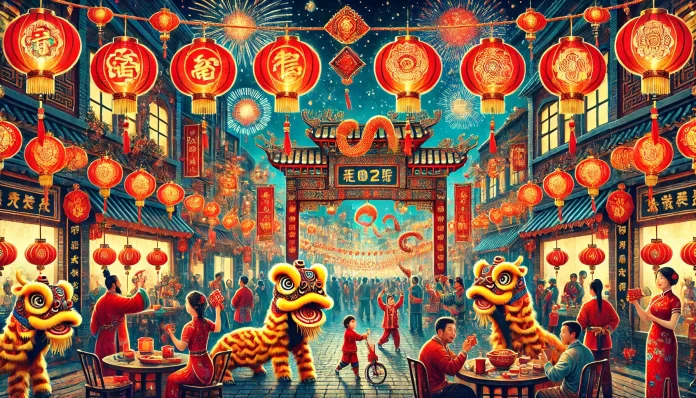The Lunar New Year in 2025 is celebrated worldwide enthusiastically, ushering in the Year of the Snake.
The event began on January 29 and is observed by millions across East Asia and beyond. This significant, tradition-rich festival follows the lunar calendar, with dates varying annually.
In Chinese culture, the Snake is regarded as a symbol of wisdom, introspection, and mystery. People born under this zodiac sign are believed to possess intelligence and elegance. With the arrival of this new year, hopes for prosperity, harmony, and personal growth are being renewed.
A Festival of Family Reunions and Traditions
The Lunar New Year is widely regarded as a time for family reunions. Millions travel home across China, Vietnam, Korea, and other countries, often enduring long and challenging journeys. Known as the world’s largest human migration, the annual “Spring Festival Travel Rush” in China will involve hundreds of millions of travelers.
Traditional customs are being followed with great care. Homes are thoroughly cleaned before New Year’s Day to sweep away bad luck and welcome good fortune. Red decorations symbolizing happiness and prosperity are hanging on doors and windows. Special foods, such as dumplings, rice cakes, and fish, are being prepared, each carrying its symbolic meaning.
Significance of New Year’s Eve
New Year’s Eve remains the most significant part of the festival. Families gather for a reunion dinner, considered the year’s most important meal. Lavish dishes are served, emphasizing abundance and luck. At midnight, fireworks and firecrackers are set off to drive away evil spirits and welcome the New Year with joy.
Red envelopes filled with money are also exchanged. These envelopes, known as “hongbao” in Chinese and “sedation” in Korean, are traditionally given to children and younger family members as a symbol of good fortune and blessings.
Celebrations Beyond Asia
While the Lunar New Year is most prominent in East Asia, the festival is celebrated globally, especially in countries with significant Asian communities. Large parades, lion dances, and cultural performances are organized in cities like San Francisco, London, and Sydney. These events allow people of all backgrounds to participate in the festivities and learn about the rich cultural heritage associated with the New Year.
A Time for Reflection and Renewal
Beyond the celebrations, the Lunar New Year is a time for reflection and renewal. Many individuals set personal goals and make resolutions for the year ahead. Paying off debts, mending relationships, and letting go of past grievances are emphasized as part of the tradition to start the year on a positive note.
Astrological Significance of the Year of the Snake
In Chinese astrology, the Year of the Snake is expected to emphasize strategy and adaptability. The Snake is associated with careful planning, resourcefulness, and transformation. Those seeking success in 2025 must embrace patience and focus on long-term goals.
Preserving Traditions in Modern Times
Despite rapid modernization, efforts to preserve Lunar New Year traditions are being prioritized. Younger generations are being encouraged to learn about the customs and cultural significance of the festival. Social media and technology are used to share stories, recipes, and experiences, ensuring the festival remains relevant and meaningful in the modern era.
Looking Ahead to a Year of Prosperity
As the Lunar New Year festivities continue, people worldwide express hopes for a prosperous and harmonious 2025. These celebrations highlight the rich tapestry of cultural traditions and shared values, reminding everyone of the importance of family, unity, and renewal.

